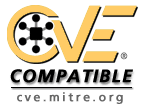Executive Summary
| Informations | |||
|---|---|---|---|
| Name | CVE-2024-45200 | First vendor Publication | 2024-09-30 |
| Vendor | Cve | Last vendor Modification | 2024-09-30 |
Security-Database Scoring CVSS v3
| Cvss vector : N/A | |||
|---|---|---|---|
| Overall CVSS Score | NA | ||
| Base Score | NA | Environmental Score | NA |
| impact SubScore | NA | Temporal Score | NA |
| Exploitabality Sub Score | NA | ||
| Calculate full CVSS 3.0 Vectors scores | |||
Security-Database Scoring CVSS v2
| Cvss vector : | |||
|---|---|---|---|
| Cvss Base Score | N/A | Attack Range | N/A |
| Cvss Impact Score | N/A | Attack Complexity | N/A |
| Cvss Expoit Score | N/A | Authentication | N/A |
| Calculate full CVSS 2.0 Vectors scores | |||
Detail
| In Nintendo Mario Kart 8 Deluxe before 3.0.3, the LAN/LDN local multiplayer implementation allows a remote attacker to exploit a stack-based buffer overflow upon deserialization of session information via a malformed browse-reply packet, aka KartLANPwn. The victim is not required to join a game session with an attacker. The victim must open the "Wireless Play" (or "LAN Play") menu from the game's title screen, and an attacker nearby (LDN) or on the same LAN network as the victim can send a crafted reply packet to the victim's console. This enables a remote attacker to obtain complete denial-of-service on the game's process, or potentially, remote code execution on the victim's console. The issue is caused by incorrect use of the Nintendo Pia library, |
Original Source
| Url : http://cve.mitre.org/cgi-bin/cvename.cgi?name=CVE-2024-45200 |
Sources (Detail)
| Source | Url |
|---|
Alert History
| Date | Informations |
|---|---|
| 2024-09-30 17:27:25 |
|
| 2024-09-30 13:27:29 |
|





